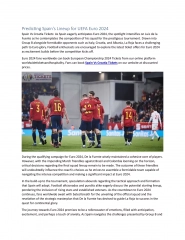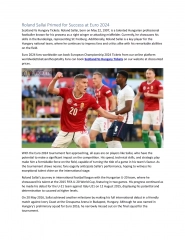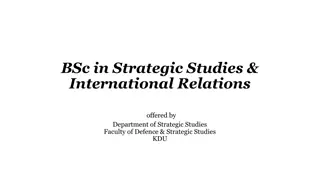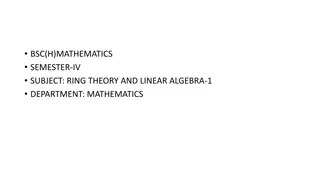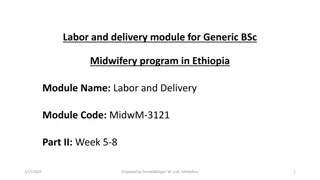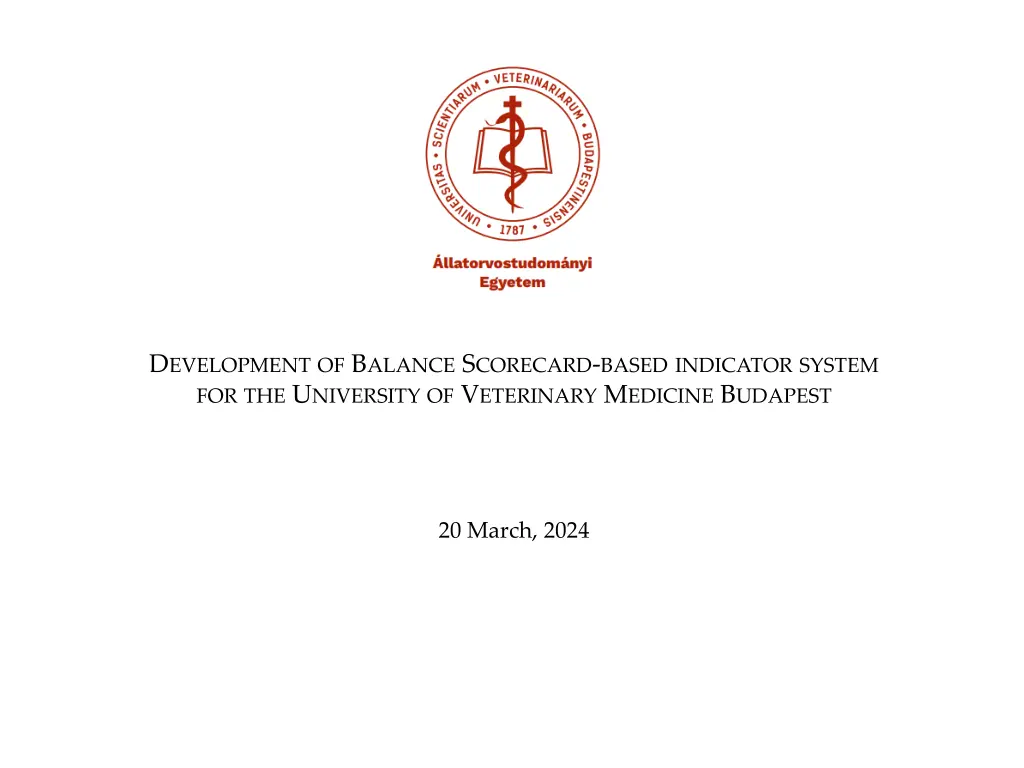
University Strategic Management with Balanced Scorecard Methodology
Implementing the Balanced Scorecard methodology in universities for strategic management helps in adapting to dynamic environments, fostering transparency, and aligning operational activities with key goals. This approach enhances performance measurement and decision-making by analyzing various perspectives such as financial, customer satisfaction, internal processes, and innovation. Practical examples from renowned universities showcase the efficacy of using BSC to manage diverse university activities effectively.
Download Presentation

Please find below an Image/Link to download the presentation.
The content on the website is provided AS IS for your information and personal use only. It may not be sold, licensed, or shared on other websites without obtaining consent from the author. If you encounter any issues during the download, it is possible that the publisher has removed the file from their server.
You are allowed to download the files provided on this website for personal or commercial use, subject to the condition that they are used lawfully. All files are the property of their respective owners.
The content on the website is provided AS IS for your information and personal use only. It may not be sold, licensed, or shared on other websites without obtaining consent from the author.
E N D
Presentation Transcript
DEVELOPMENT OF BALANCE SCORECARD-BASED INDICATOR SYSTEM FOR THE UNIVERSITY OF VETERINARY MEDICINE BUDAPEST 20 March, 2024
BALANCED SCORECARD AS A STRATEGIC MANAGEMENT SYSTEM Balanced Scorecard is a management system widely applied in strategic planning and organizational management that assigns indicators to strategic goals in order to ensure an efficient performance measurement. The Balanced Scorecard (BSC) methodology was first presented by Robert S. Kaplan and David P. Norton in a 1992 issue of the scientific journal Harvard Business Review. The methodology and its upgraded versions have been very popular ever since: the corporations of various industries have been using it worldwide in order to improve their business performance over the past decades. By applying certain indicators, the Balanced Scorecard methodology uses four different perspectives to comprehensively analyze the existence and progression of factors influencing corporate performance. OPERATIONAL INDICATORS FINANCIAL INDICATORS Customer satisfaction Internal processes Organizational innovation and development They reveal the efficiency of past measures They influence future financial performance Benefits of using BSC: Focuses on strategy and vision; Provides a comprehensive picture as it applies a holistic approach that analyzes the financial perspective as well as other operational aspects affecting business performance; Quick and easy to understand both for strategy makers and those involved in execution; Analyzes correlations between the applied indicators, thus revealing the potential corporate-level impacts of decisions; Incentivizes participants to keep the number of applied indicators at a manageable level; Helps to break down strategic goals to operative levels and induces the execution of concrete actions; Allows us to measure and monitor the achievement of strategic goals and the factors affecting them. 2
APPLICATION OF BSC METHODOLOGY AT UNIVERSITIES The application of BSC methodology is especially justified in the University s strategic management because the University: Needs to adapt to the uncertain and volatile political, economic, social and technological environment as well as the socio- cultural, educational and environmental trends; Is increasingly expected by the stakeholders of the University s operation to ensure transparent and accountable operational and decision-making mechanisms; Model shift the advancement of foundation-based funding and the increasing popularity of the university as a service provider concept. In addition to teaching, universities typically conduct various other core activities that mutually affect each other to a certain extent Consequently, there are many practical examples and related studies featured in the international literature on the application of BSC to a university environment. Most of these cases typically involve the Kaplan-Norton model s improved versions adapted to manage university characteristics better. A few examples of the perspectives applied in the above versions (Fija kowska-Oliveira; 2018)**: Ohio State University Wisconsin-Stout University 1) Undergraduate and graduate studies 2) Academic excellency 3) Human resource management 4) Social commitment and reach 5) Social diversity 1) Studies 2) Students and stakeholders 3) Finance 4) Faculty and related staff 5) Organizational efficiency IT Universities that received the Malcolm Baldridge Award* Imperial College London 1) Studies and student affairs 2) Customers 3) Governance and organizational management 4) Finance 1) Finance 2) Learning and growth of instructors and students 3) Institutional capabilities 4) Research results * The Malcolm Baldridge National Quality Award was established by the United States Congress in 1987 to recognize organizations successfully implementing and applying quality management systems. 3 ** Source: Fija kowska, J., Oliveira, C. (2018): Balanced Scorecard in Universities; Journal of Intercultural Management, Vol. 10, No. 4, December 2018, pp. 57 83
FOUR PERSPECTIVES PROPOSED TO CONSIDER IN THE EVALUATION OF UVMBS PERFORMANCE As it is clearly shown by the different numbers and approaches of the perspectives used for the Balanced Scorecard systems developed for the purposes of the university application described above, it is highly important to efficiently adapt the perspectives of the BSC concept to the circumstances, characteristics and strategic goals of the given university. After researching the literature and analyzing the strategy of the University of Veterinary Medicine Budapest, the Balanced Scorecard concept was developed with a focus on the following four perspectives: Finance, Customers, Human Resources and Supporting Infrastructure. Since Human Resources and Supporting Infrastructure are essential pillars of successfully realizing the University s vision, their adoption as key perspectives help us to apply a common, unified approach to the strategic management of these different core activities. Analyzes the University s current financial state as well as what needs to be done in order to improve the financial state in the future. FINANCE Analyzes the satisfaction of customers (students and cooperating partners) as well as what the University needs to do in order to generate more value and benefit. CUSTOMERS VISION AND STRATEGY Analyzes whether the University is able to provide sufficient quantity and quality in terms of human resources to perform its core activities. HUMAN RESOURCES This perspective investigates the University s ability to ensure a constant infrastructural improvement in order to meet market demands, expectations and requirements. SUPPORTING INFRASTRUCTURE Each of the above perspectives identifies strategic goals and the initiatives required for achieving the objectives. Based on the four perspectives, we can create an indicator system that allows us to analyze, monitor and evaluate the success of the business strategy. 4
IMPLEMENTATION PROCESS OF BALANCED SCORECARD CONCEPT DEVELOPMENT IMPLEMENTATION Define mission, vision Identify strategic goals and break them down based on the four perspectives Identify initiatives related to the strategic goals Assign indicators that allow for the measurement and achievement of strategic goals connected to each perspective Map relations between indicators (cause-effect) Identify data sources for indicators, identify new data collection needs if necessary Helyzet rt kel s Identify target values of indicators and assign the parties in charge of ensuring the availability of current data Annual cycle Control Plan Reform strategic management system, Do 5
STRATEGIC MAP OF UNIVET BUDAPEST BASED ON THE BSC TEACHING RESEARCH CLINIC TEACHING FARM Develop research and innovation area into independent core activity Retain clinic with highest progressivity level Develop teaching farm into model farm Maintain and increase quality of teaching Strategic direction FINANCE Increase financial efficiency Ensure cooperation conditions to become model farm Retain international and domestic position Commercialize inventions Enlarge customer base CUSTOMERS HUMAN RESOURCES Develop quality of teaching Retain and improve quality of research Retain and increase outstanding expertise Improve quality of teaching farm activity Develop infrastructure of clinical services Develop teaching infrastructure Develop research infrastructure Develop teaching farm infrastructure SUPPORTING INFRASTRUCTURE 6
INITIATIVES AND THE RELATED KEY INDICATORS IN LIGHT OF THE STRATEGIC GOALS Strategic direction Maintain and increase quality of teaching TEACHING STRATEGIC GOAL INITIATIVE KEY INDICATORS Total revenue from teaching activity Increase revenue from teaching Average direct cost per instructor Increase financial efficiency Monitor/maintain cost efficiency of teaching FINANCE Direct specific and per-student costs of teaching Performance of teaching indicators defined in the public service contract compared to the contractual terms and requirements Maximize revenue defined in contract on financing the performance of public service Number of active foreign students Maintain number of foreign students Retain Percentage of European students Retain higher percentage of European students CUSTOMERS international and domestic position Number of students with Marek Scholarship Increase the number of students participating in food animal and food chain safety training Number of international Alumni groups Develop international Alumni activity Number of international further training courses (professional days, professional training courses, etc.) Increase the role of international further training courses Number of foreign PhD students with Stipendium Hungaricum Scholarships Strengthen the international position of the Doctoral School Result of graduate satisfaction survey Increase graduate satisfaction Result of employer survey Increase employer satisfaction Result of teacher evaluation by students Increase student satisfaction (regarding quality of teaching) Develop quality of teaching HUMAN RESOURCES Indicator defined based on the measurement results of the recruitment agency Reform admission requirements related to foreign language competency Input from employer surveys Develop fundamental/required practical competencies Rate of scientifically qualified instructors/lecturers Participate in further training of teaching methodology Teaching staff turnover Retain and increase the number of trained instructors Develop teaching infrastructure Time actively spent by instructors and students on eLearning platforms Modernize teaching infrastructure SUPPORTING INFRASTRUCTURE 7
INITIATIVES AND THE RELATED KEY INDICATORS IN LIGHT OF THE STRATEGIC GOALS Strategic direction Develop research and innovation area into independent core activity RESEARCH STRATEGIC GOAL INITIATIVE KEY INDICATORS Net revenue from corporate research and development (R&D) Increase revenue from research Increase financial efficiency Net revenue from commercialization of intellectual property (e.g.: patent, trademark, industrial/community design, know- how, etc.) FINANCE Revenue from tenders Number of trademark registrations Incentivize innovative research projects Commercialize inventions Number of new corporate R&D projects CUSTOMERS Number of commercialized intellectual properties (e.g.: patent, trademark, industrial/community design, know- how, etc.) Number of active relations between university departments and industrial partners Maintain and increase the number of industrial cooperation projects Number of (tenured or non-tenured) international researchers Number and indicators of joint articles with foreing research organizations Improve international research partnerships Retain and improve quality of research HUMAN RESOURCES Number of new entrants into research activity Number of internal research grants Recruit researchers Publication output (number of D1 publications, Veterinary Q1 publications, TOP VetQ1 articles, citations) Retain high success rate of research projects Place in university rankings (Shanghai) Advancement in international university rankings Rate and number of tenders won and submitted Increase participation in international and Hungarian tenders Develop research infrastructure SUPPORTING INFRASTRUCTURE Number and value of newly-acquired assets related to research Develop infrastructure 8
INITIATIVES AND THE RELATED KEY INDICATORS IN LIGHT OF THE STRATEGIC GOALS Strategic direction Retain clinic with highest progressivity level CLINIC STRATEGIC GOAL INITIATIVE KEY INDICATORS Increase financial efficiency FINANCE Revenue from clinical service Increase revenue from clinical service Number of clinic appointments Number of new medical charts Number of RTG/CT examinations Number of ultrasound examinations Number of endoscopic examinations Surgical capacity/worksheet CT capacity/worksheet Ultrasound capacity/worksheet Endoscopic capacity/worksheet Maintain/Increase case numbers Enlarge customer base CUSTOMERS Retain and increase outstanding expertise Number of international (European) specialists (College members) Improve quality of clinical services HUMAN RESOURCES Number of international (European) specialists (College members) Provide conditions that meet the needs of Hungarian and international experts with special skills (specialists) Number of interns and residents Increase intern and resident activity Turnover of clinical staff Retain clinical staff Develop infrastructure of clinical services SUPPORTING INFRASTRUCTURE Annual investment into clinical infrastructure Modernize instrument park 9
INITIATIVES AND THE RELATED KEY INDICATORS IN LIGHT OF THE STRATEGIC GOALS Strategic direction Develop teaching farm into model farm TEACHING FARM STRATEGIC GOAL INITIATIVE KEY INDICATORS Increase financial efficiency Efficiency Increase revenue from teaching farm activity FINANCE Ensure cooperation conditions to become model farm Number of cooperation projects/partnerships with key players in Hungarian agriculture Develop cooperation projects/partnerships with key players in Hungarian agriculture CUSTOMERS Improve quality of teaching farm activity Variance from planned headcount Recruit and retain the necessary human resources HUMAN RESOURCES Develop teaching farm infrastructure Number and value of acquired assets Develop assets by utilizing existing and future synergies SUPPORTING INFRASTRUCTURE 10


